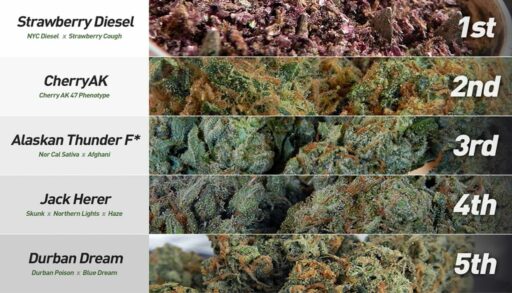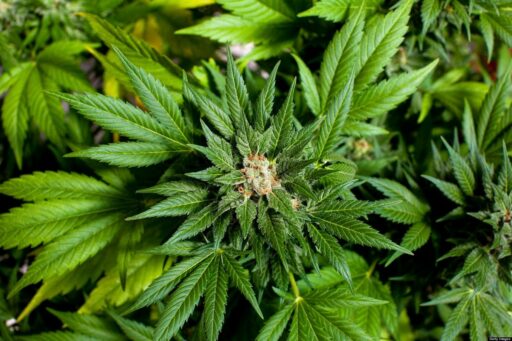New York’s journey into marijuana legalization has been marked by high hopes and complex challenges. As the state navigates the implications of the Marijuana Regulation and Taxation Act (MRTA), it confronts a landscape altered by economic expectations, social justice goals, and regulatory hurdles. This article delves into the multifaceted impact of marijuana legalization in New York, examining the rocky path to establishing a legal market, the tension between economic promises and realities, the pursuit of social equity, the unforeseen consequences of regulatory frameworks, and the prospects of policy reform.
Key Takeaways
- New York’s marijuana legalization has faced significant challenges, including a slow licensing process and the proliferation of unlicensed dispensaries, which outnumber legal ones by a wide margin.
- The state’s high expectations for economic growth and job creation in the cannabis industry are challenged by competition with a persistent black market.
- Social justice initiatives aimed at correcting past injustices are central to New York’s legalization efforts, with a focus on community reinvestment and diversity in business ownership.
- Governor Kathy Hochul has acknowledged the issues in the rollout of legalization and supports legislation to reduce marijuana taxes to help licensed businesses compete more effectively.
- As the state continues to refine its cannabis policies, lessons from other states and the evolution of regulatory and banking frameworks are informing New York’s approach to creating a responsible and inclusive market.
The Rocky Road to Legalization

The Marijuana Regulation and Taxation Act (MRTA) Overview
The Marijuana Regulation and Taxation Act (MRTA), enacted on March 31, 2021, laid the groundwork for a new era in New York’s approach to cannabis. The act established the Office of Cannabis Management (OCM), which is responsible for regulating the medical, adult-use, and cannabinoid hemp markets. The OCM operates under the guidance of the Cannabis Control Board and is charged with the comprehensive oversight of cannabis-related activities in the state.
Under the MRTA, a variety of regulations have been put into place, including those for packaging, labeling, marketing, and advertising. These regulations aim to ensure consumer safety and fair market practices. Additionally, the act has implications for taxation, with a local excise tax imposed on retail cannabis sales.
The MRTA represents a significant shift in policy, with the potential to influence not only the cannabis industry but also social justice and economic development within New York.
The economic landscape of cannabis in New York is also shaped by taxation strategies. A local excise tax is levied at the point of sale from dispensaries to consumers, which is set at 4 percent of the product’s price. This tax structure is a critical component of the act, as it affects pricing, market competitiveness, and state revenue.
Challenges in the Licensing Process
The path to obtaining a cannabis business license in New York has been fraught with obstacles. Guidance and financial assistance for applicants have been notably absent, leaving many to navigate the complex regulatory environment on their own. The high taxes and stringent regulations have not only made the process more challenging but also less competitive against the persistent unauthorized dealers.
Lawsuits have emerged as a significant hurdle, with accusations of the agency overstepping its authority and providing conflicting guidance. The push for diversity has also led to claims of discrimination, further complicating the licensing landscape. This has resulted in considerable delays, with the promised support for the first dispensaries yet to be seen.
A proposed points system for evaluating license applications is under debate, considering factors such as industry experience and business plans. Additionally, the introduction of temporary licenses aims to expedite the market’s readiness, though these are exclusively for social equity applicants and will be distributed via a lottery system.
The licensing process in NY is a complex puzzle, with each piece from lawsuits to regulatory changes affecting the overall picture of legalization.
The Equity Program Controversy
The introduction of New York’s Social and Economic Equity (SEE) Plan was met with a mixture of anticipation and skepticism. The goal was to ensure that those disproportionately affected by cannabis prohibition would benefit from the new legal market. However, the execution of this plan has not been without its critics. Some argue that the program’s focus on social equity has led to market distortions, favoring certain groups over others with the capacity to run successful cannabis businesses.
Despite the controversy, the Cannabis Control Board (CCB) passed Resolution No. 2023-17 to approve the SEE Plan, emphasizing its commitment to social and economic fairness. Yet, the fear persists among industry participants and advocates that the program may not fully achieve its intended social equity goals.
The eventual rollout of New York’s cannabis program was beleaguered by delays caused by lawsuits and the proliferation of illegal cannabis retailers.
In other states, such as Arizona, the implementation of similar equity programs has resulted in unintended outcomes. A report by the Arizona Center on Investigative Reporting revealed that a significant portion of social equity license lottery winners were already established corporate dispensaries. This raises questions about the effectiveness of such programs in truly diversifying the industry.
Economic Promises vs. Market Realities

Projected Growth and Job Creation
The legalization of adult-use cannabis in New York City heralds a new era of economic potential. New York’s cannabis market is projected to be worth between $1.7 to $3.5 billion, potentially creating up to 43,400 jobs. This positions the cannabis industry to surpass the craft brewing sector in employment numbers, signaling a significant shift in the job market landscape.
| Economic Indicator | Projection |
|---|---|
| Market Worth | $1.7 to $3.5 billion |
| Job Creation | Up to 43,400 jobs |
| Economic Output | $3.2 billion |
The city’s commitment to equitable business development in the cannabis sector is underscored by investments aimed at supporting communities historically affected by cannabis criminalization.
With the establishment of temporary licenses, the state aims to expedite the entry of social equity applicants into the market. These licenses are a stepping stone, set to convert into official ones upon the opening of general applications, provided the businesses maintain good standing.
Competition with the Black Market
Despite the legalization of marijuana in New York, the anticipated regulation and displacement of organized crime have not materialized as expected. The black market continues to thrive, posing a significant challenge to the legal cannabis industry. The illicit market’s ability to avoid taxes and undercut legal prices has led to a situation where illegal operators vastly outnumber licensed dispensaries.
The disparity between the number of legal and illegal cannabis operations is stark, with illicit operators outnumbering legally licensed retail dispensaries by about 23 to 1.
This imbalance has not only impacted the legal market’s growth but also the state’s ability to generate expected revenue. High taxes and stringent regulations have inadvertently supported the persistence of the black market, as consumers often find it more economical to purchase from unauthorized dealers. The table below illustrates the current market dynamics:
| Market Type | Number of Operators |
|---|---|
| Legal | 1 |
| Illicit | 23 |
To address this issue, it is crucial for New York to reconsider the barriers that are fostering this environment. This includes reevaluating taxes, regulations, and the support system for those attempting to enter the legal market.
Impact on Tax Revenue and State Economy
The legalization of marijuana in New York was accompanied by high expectations for tax revenue generation. However, the implementation of the THC tax has faced criticism for potentially fueling the black market, where no taxes are applied. This tax was intended to scale with potency, aiming to deter overconsumption and maintain revenue despite falling retail prices. Yet, the presence of a tax-free black market creates a dilemma between maximizing revenue and curbing illegal sales.
Governor Hochul has proposed a shift in tax strategy, advocating for a reduction in marijuana taxes to enhance the competitiveness of licensed businesses. The suggested move to a 9 percent wholesale excise tax is a response to the challenges faced by legal dispensaries in competing with unlicensed dealers.
The economic impact of the cannabis industry in New York is significant, with projections indicating a potential $1.7 billion market. This could translate into nearly 24,000 jobs and over $3 billion in economic output, highlighting the importance of a well-calibrated taxation and regulatory approach.
The state’s tax policy and regulatory framework are pivotal in shaping the cannabis market’s success. Adjustments to these policies are crucial to ensure that the legal market thrives, providing the anticipated economic and employment benefits while also addressing social equity concerns.
The Social Justice Angle
Addressing Past Injustices
In the wake of marijuana legalization, New York has rolled out a social-justice oriented program aimed at addressing the historical injustices caused by the war on drugs. The state’s approach includes preferences for license applicants who have been adversely affected by previous cannabis criminalization policies. This initiative seeks to rectify the past by providing opportunities to those who were once penalized for activities that are now legal.
However, the execution of this plan has sparked debate. Critics argue that while the state does owe a debt to those harmed by its former laws, the current method of offering license preferences may not be the most effective form of reparation. It is limited to individuals interested in the cannabis market, inadvertently excluding many who suffered under the old regime but have no desire to enter this industry.
The challenge lies in creating a system that not only acknowledges past wrongs but also delivers justice in a manner that is inclusive and equitable. The focus should be on developing a comprehensive strategy that extends beyond mere market participation to encompass various forms of support and compensation.
The New York Social and Economic Equity (SEE) Plan is a step in this direction, aiming to ensure diversity and fairness in the burgeoning cannabis market. Yet, the path to achieving true equity is complex and requires ongoing evaluation and adjustment to meet the needs of all affected communities.
Community Reinvestment Initiatives
In the wake of marijuana legalization, New York has placed a significant emphasis on community reinvestment initiatives. These initiatives are designed to support the communities most adversely affected by previous drug policies. A key component of this effort is the amendment of agreements to bolster the Social Equity Impact Ventures, as seen in the recent resolution by the Dormitory Authority of the State of New York (DASNY).
The focus on small, rural, and disadvantaged communities is evident in the expansion of awards from 25% to 50% for large projects that could overburden ratepayers. This change is a strategic move to alleviate financial stress and support infrastructure improvements in these areas.
Governor Hochul’s administration has also taken steps to combat illicit cannabis sales, which can undermine the legal market and its associated community benefits. The expansion of enforcement powers is a testament to the state’s commitment to nurturing a healthy and equitable cannabis industry. Moreover, the Environmental Facilities Corporation’s announcement of $325 million in grants for water infrastructure projects underscores the state’s dedication to community development and equitable access to funding.
Diversity in Cannabis Business Ownership
The landscape of cannabis business ownership in New York is as diverse as the city itself. The state’s affirmative action policies have paved the way for a broad spectrum of individuals to enter the market. This includes people with past criminal convictions, veterans, women, and members of Black, Latino, and Asian communities. The intent behind these policies is to rectify the disproportionate impact that cannabis criminalization has had on certain groups.
However, the execution of these policies has not been without its challenges. Critics argue that while the goal of social equity is commendable, the implementation has been flawed. The mandated preferences for license applicants have, in some cases, hindered the growth of a legal marijuana supply. Moreover, there’s a debate on whether individuals with marijuana convictions should be given a legal advantage over potentially more qualified entrepreneurs who have not faced arrest.
The ongoing discussion reflects the complexity of balancing social justice with economic efficiency in the burgeoning cannabis industry.
The state’s approach to licensing also includes a points system, which takes into account various criteria such as industry experience and business plans. This system is currently under scrutiny, with proposed changes sparking fierce debates about the best way to ensure fairness and diversity in the market.
Regulatory Hurdles and Unintended Consequences

Bureaucratic Delays and Inefficiencies
The journey to establish a regulated cannabis market in New York has been marred by bureaucratic delays and inefficiencies. These obstacles have not only frustrated potential business owners but have also had a ripple effect on the broader market and state economy.
- Lawsuits have arisen from those feeling excluded by the state’s preferences, causing further postponements in the licensing process.
- The lack of clear guidance and promised financial support has left many applicants struggling to navigate the complex regulatory environment.
- High taxes and stringent regulations have inadvertently given an edge to the unlicensed market, undermining the legal industry.
The chaos ensuing from these delays has disrupted tax revenue forecasts and mocked the notion that New York could outperform other states in mitigating the black market.
Municipal Infrastructure Program Application Deadlines:
| Phase | Public Applicants | Private Applicants |
|---|---|---|
| 1 | Closed March 8, 2024 | – |
| 2 | April 19, 2024 | – |
| 3 | – | June 7, 2024 |
The Proliferation of Unlicensed Dispensaries
The landscape of New York’s cannabis market is marked by a stark imbalance between licensed and unlicensed dispensaries. More than a year after legalization, unlicensed operators significantly outnumber their legal counterparts. This proliferation is indicative of the state’s struggle to establish a regulated market that can compete with the entrenched black market.
Despite the state’s efforts, the ratio of unlicensed to licensed dispensaries remains alarmingly high:
| Type of Dispensary | Estimated Number |
|---|---|
| Licensed | 87 |
| Unlicensed | 2,000+ |
The discrepancy in numbers not only undermines the legal market but also poses questions about the effectiveness of the state’s regulatory framework.
Governor Hochul’s acknowledgment of the situation as a ‘disaster’ reflects the urgency of addressing these regulatory challenges. The state’s failure to meet its own predictions for licensed dispensary openings has fueled the growth of unlicensed shops, which now dominate the urban landscape. This has led to a paradox where the push for a diverse and equitable market is being overshadowed by the sheer volume of illicit operations.
Revisiting Taxation Strategies
In the wake of legalization, New York’s approach to cannabis taxation has come under scrutiny. The THC tax, initially designed to deter overconsumption and maintain revenue, has faced criticism for its unintended bolstering of the black market. Legislators are now grappling with the delicate balance between taxation for revenue and the risk of pushing consumers toward untaxed alternatives.
The challenge lies in crafting a tax strategy that doesn’t inadvertently incentivize the black market, while still providing the state with necessary funds.
Governor Hochul’s proposed shift from a THC tax to a wholesale excise tax reflects a broader recognition of the need for change. The proposed 9 percent wholesale excise tax aims to simplify the tax structure and enhance the competitiveness of licensed businesses. Here’s a brief comparison of the current and proposed tax structures:
| Tax Type | Current Tax Strategy | Proposed Tax Strategy |
|---|---|---|
| THC Tax | Based on potency | Eliminated |
| Wholesale Excise | – | 9% |
This revision suggests a move towards a more sustainable model that could help licensed dispensaries thrive and contribute to the state’s economy without overburdening consumers.
Looking Forward: Reforming Cannabis Policy in NY

Learning from Other States’ Experiences
As New York looks to refine its approach to cannabis policy, valuable insights can be gleaned from the experiences of other states. The diversity of regulatory frameworks across the nation offers a rich tapestry of lessons learned. For instance, some states have successfully balanced market growth with social equity programs, while others have struggled with enforcement due to varying laws.
- The importance of a unified regulatory approach
- Strategies for effective market regulation and competition
- Balancing taxation with market incentives
In considering these lessons, New York can aim to create a more cohesive and effective cannabis industry, one that serves as a model for both economic vitality and social justice.
The National Conference of State Legislatures provides a comprehensive Cannabis Overview, detailing the national landscape of legalization, decriminalization, and record clearance. This resource can serve as a benchmark for New York’s ongoing policy reform efforts.
Proposed Legislative Changes
In the wake of New York’s evolving cannabis landscape, a series of proposed legislative changes aim to refine the regulatory framework. Key revisions focus on packaging, labeling, marketing, and advertising regulations, ensuring that products meet stringent safety and quality standards. The Office of Cannabis Management has also pitched a bill to overhaul the licensing application process, sparking debate among stakeholders.
- Part 128 & 129 – Revised rulemaking for marketing and advertising
- Part 130 – Revised cannabis laboratory regulations
- Part 132 – Proposed cannabis research regulations
These proposals have not been met without contention. Concerns have been raised about the potential impact on social equity goals, with industry advocates urging lawmakers to consider the implications carefully. The proposed changes are seen as a balancing act between fostering a responsible industry and maintaining the social justice ethos of the legalization movement.
The proposed legislative changes represent a critical step in ensuring that New York’s cannabis industry can thrive in a safe, regulated environment while honoring commitments to social equity.
The Future of Cannabis Banking and Finance
The advancement of the SAFER Banking Act by the Senate Banking Committee could herald a new era for the cannabis industry in New York. This legislative progress suggests a potential shift towards more robust banking and financial services for cannabis businesses, addressing a critical need for secure and efficient financial management.
Herring Bank has emerged as a pioneer in this space, offering a Cannabis Banking Program tailored to the industry’s unique requirements. Their services include:
- Checking and savings accounts specifically for cannabis businesses
- 24/7 online banking access
- Electronic tax submission capabilities
This suite of solutions is designed to ensure that cannabis businesses can operate with the same financial ease as other sectors. The bank’s commitment to digital and mobile banking solutions underscores the importance of accessibility and convenience in today’s market.
The evolving regulatory and banking framework in New York City is a testament to the state’s dedication to creating a safe and inclusive cannabis market. With financial partners like Herring Bank, the industry is poised for success in a competitive and diverse environment.
As the industry continues to mature, the integration of comprehensive financial services will be paramount. The future of cannabis banking and finance in NY looks promising, with the potential for increased stability and growth for businesses navigating these new waters.
Conclusion
As New York navigates the tumultuous waters of marijuana legalization, the journey has been fraught with challenges. The state’s approach, marked by political missteps and bureaucratic hurdles, has led to a legalization landscape that Governor Hochul herself has labeled a ‘disaster.’ Despite the lofty goals of economic growth and social justice, the reality on the ground is a stark contrast, with unlicensed shops vastly outnumbering legal dispensaries and the black market continuing to thrive. The state’s slow licensing process and high taxes have hindered the industry’s potential, leaving stakeholders from farmers to retailers in a state of uncertainty. While there is a glimmer of progress with the opening of more dispensaries and a push for tax reduction, New York must learn from its own experiences and those of other states to streamline regulations, foster a competitive market, and ultimately fulfill the promise of a legalized cannabis industry that benefits all.
Frequently Asked Questions
What is the Marijuana Regulation and Taxation Act (MRTA)?
The MRTA is comprehensive legislation signed into law on March 31, 2021, establishing the regulatory framework for medical and recreational marijuana in New York. It created the Office of Cannabis Management (OCM) to oversee the licensure, cultivation, production, distribution, sale, and taxation of cannabis within the state.
What challenges are associated with the licensing process in NY?
New York’s licensing process for cannabis dispensaries has been criticized for being slow and complicated, with an equity program that prioritizes applicants with marijuana-related criminal records or their relatives, making navigation of the process frustrating for many.
What is the goal of New York’s cannabis equity program?
The equity program aims to prioritize the approval of cannabis business applicants who have been disproportionately impacted by previous marijuana prohibition laws, including individuals with marijuana-related criminal records or their relatives.
How has marijuana legalization impacted New York’s economy?
The legalization of cannabis in New York is expected to create a market worth $1.7 to $3.5 billion and potentially up to 43,400 jobs. It aims to surpass the craft brewing sector in employment numbers and generate significant economic output and tax revenue.
What are the concerns regarding the competition with the black market?
High taxes and regulatory barriers have made it difficult for licensed marijuana businesses to compete with the black market, leading to a proliferation of unlicensed dispensaries. The state is considering legislation to reduce marijuana taxes to help licensed businesses compete more effectively.
What future reforms are being considered for cannabis policy in NY?
Reforms may include learning from other states’ experiences to improve the regulatory framework, reducing marijuana taxes, and enhancing cannabis banking and finance options to support the growth of the legal cannabis industry in New York.





